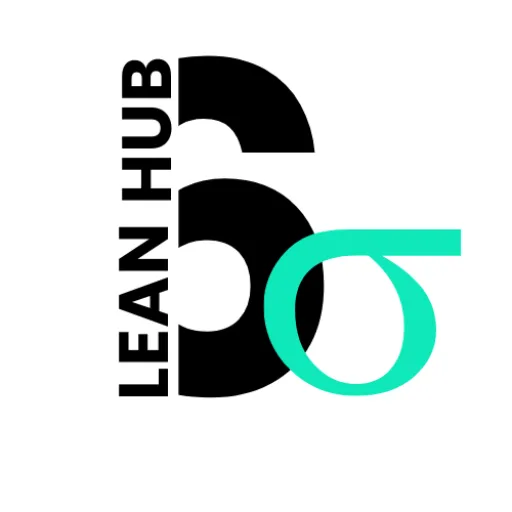Lean Principles: Streamlining Processes for Efficiency
In the ever-evolving landscape of business, we find ourselves constantly seeking ways to enhance efficiency and effectiveness. Lean principles have emerged as a powerful methodology that allows organizations to streamline processes, reduce waste, and ultimately deliver greater value to customers. Originating from the Toyota Production System, these principles emphasize the importance of maximizing customer value while minimizing resources.
As we delve into the core tenets of lean thinking, we recognize that it is not merely a set of tools but a holistic approach that requires a cultural shift within organizations. At its essence, lean thinking encourages us to scrutinize every aspect of our operations. We are prompted to ask critical questions about our processes: What adds value?
What constitutes waste? By fostering a mindset focused on continuous improvement, we can create an environment where every team member is empowered to contribute to the organization’s success. This journey towards lean transformation is not just about adopting new practices; it is about embracing a philosophy that prioritizes efficiency and customer satisfaction above all else.
Key Takeaways
- Lean principles focus on maximizing customer value while minimizing waste
- Understanding waste and value in processes is essential for identifying areas of improvement
- Implementing lean tools and techniques such as 5S, Kanban, and value stream mapping can help streamline processes
- Leadership plays a crucial role in driving lean transformation and creating a culture of continuous improvement
- Continuous improvement and Kaizen involve making small, incremental changes to improve processes over time
Understanding Waste and Value in Processes
To effectively implement lean principles, we must first grasp the concepts of waste and value. Waste, in this context, refers to any activity or resource that does not add value to the end product or service. It can manifest in various forms, such as overproduction, waiting times, excess inventory, and unnecessary motion.
By identifying and eliminating these wasteful practices, we can streamline our operations and enhance overall productivity. This process requires us to take a critical look at our workflows and challenge the status quo. On the other hand, value is defined by the customer’s perspective.
It is essential for us to understand what our customers truly want and need. By aligning our processes with customer expectations, we can ensure that every step we take contributes to delivering value. This alignment not only enhances customer satisfaction but also fosters loyalty and repeat business.
As we embark on this journey of understanding waste and value, we must cultivate a mindset that prioritizes customer needs while relentlessly pursuing efficiency.
Implementing Lean Tools and Techniques
As we move forward in our lean journey, we encounter a variety of tools and techniques designed to facilitate the implementation of lean principles. Among these tools, Value Stream Mapping stands out as a powerful method for visualizing processes and identifying areas for improvement. By mapping out the flow of materials and information, we can pinpoint bottlenecks and inefficiencies that hinder our operations.
This visual representation allows us to engage our teams in meaningful discussions about how to optimize workflows. Another essential tool in our lean toolkit is the 5S methodology, which focuses on organizing and standardizing the workplace. The five pillars of 5S—Sort, Set in order, Shine, Standardize, and Sustain—encourage us to create a clean and efficient work environment.
By implementing 5S practices, we not only enhance productivity but also foster a culture of discipline and accountability among team members. These tools, when applied thoughtfully, can significantly contribute to our overall lean transformation efforts.
The Role of Leadership in Lean Transformation
| Leadership Role | Impact on Lean Transformation |
|---|---|
| Setting Clear Vision | Provides direction and purpose for the transformation |
| Leading by Example | Inspires and motivates employees to embrace lean principles |
| Empowering Employees | Fosters a culture of continuous improvement and innovation |
| Providing Resources | Ensures necessary support and resources for lean initiatives |
| Removing Barriers | Eliminates obstacles that hinder lean implementation |
| Measuring Performance | Tracks progress and identifies areas for improvement |
Leadership plays a pivotal role in the successful implementation of lean principles within an organization. As leaders, we must embody the values of lean thinking and serve as role models for our teams. This involves not only promoting the adoption of lean practices but also fostering an environment where continuous improvement is celebrated.
By demonstrating our commitment to lean principles, we inspire our teams to embrace change and actively participate in the transformation process. Moreover, effective communication is crucial in guiding our teams through this journey. We must articulate a clear vision for lean transformation and ensure that everyone understands their role in achieving it.
By involving team members in decision-making processes and encouraging their input, we create a sense of ownership that drives engagement and motivation. As leaders, it is our responsibility to cultivate a culture where experimentation is encouraged, failures are viewed as learning opportunities, and successes are recognized and celebrated.
Continuous Improvement and Kaizen
At the heart of lean principles lies the concept of continuous improvement, often encapsulated by the Japanese term “Kaizen.” This philosophy emphasizes the importance of making incremental changes that lead to significant improvements over time. As we adopt a Kaizen mindset, we commit ourselves to regularly assess our processes and seek opportunities for enhancement. This ongoing pursuit of excellence requires us to be open-minded and willing to adapt as we learn from both successes and setbacks.
Implementing Kaizen involves engaging all team members in the improvement process. We encourage everyone to share their insights and suggestions for enhancing workflows, as those closest to the work often have valuable perspectives on how to eliminate waste and improve efficiency. By fostering a culture of continuous improvement, we empower our teams to take ownership of their work and contribute actively to the organization’s success.
Developing a Culture of Accountability and Empowerment
For lean principles to take root within an organization, it is essential to cultivate a culture of accountability and empowerment. We must create an environment where team members feel responsible for their contributions and are encouraged to take initiative in driving improvements. This culture begins with clear expectations and performance metrics that align with our lean objectives.
When individuals understand how their roles impact overall success, they are more likely to take ownership of their work. Empowerment goes hand in hand with accountability. We should provide our teams with the tools, resources, and authority they need to make decisions that enhance efficiency and customer value.
By fostering an atmosphere of trust and collaboration, we enable team members to experiment with new ideas without fear of failure. This empowerment not only boosts morale but also drives innovation as individuals feel motivated to contribute their unique insights toward achieving our collective goals.
Lean Principles in Different Industries
While lean principles originated in manufacturing, their applicability extends far beyond this sector.
We have witnessed successful implementations across various industries, including healthcare, finance, education, and service sectors.
In healthcare, for instance, lean methodologies have been employed to streamline patient care processes, reduce wait times, and enhance overall patient satisfaction.
By focusing on eliminating wasteful practices such as unnecessary paperwork or redundant procedures, healthcare providers can deliver more efficient care.
In the finance industry, organizations have adopted lean principles to improve operational efficiency and enhance customer service. By analyzing workflows and identifying bottlenecks in processes such as loan approvals or account management, financial institutions can reduce turnaround times and improve client experiences.
Similarly, educational institutions have embraced lean thinking to optimize administrative processes and enhance student engagement. The versatility of lean principles allows us to adapt these methodologies to suit the unique challenges faced by different industries.
Case Studies of Successful Lean Implementations
To illustrate the effectiveness of lean principles in action, we can examine several case studies that highlight successful implementations across diverse organizations. One notable example is Boeing’s use of lean methodologies in its production processes. By adopting lean principles, Boeing was able to reduce production time for its 787 Dreamliner significantly while improving quality control measures.
This transformation not only enhanced operational efficiency but also positioned Boeing as a leader in the aerospace industry. Another compelling case study comes from Virginia Mason Medical Center in Seattle, which implemented lean principles to revolutionize patient care delivery. By applying value stream mapping techniques and engaging staff in continuous improvement initiatives, Virginia Mason was able to reduce patient wait times by 50% while improving overall patient satisfaction scores.
This success story underscores the potential for lean methodologies to drive meaningful change in healthcare settings. In conclusion, as we reflect on our exploration of lean principles, it becomes evident that this approach offers a comprehensive framework for enhancing efficiency and delivering value across various sectors. By understanding waste and value, implementing effective tools and techniques, fostering strong leadership, embracing continuous improvement through Kaizen, cultivating accountability and empowerment, adapting lean principles across industries, and learning from successful case studies, we position ourselves for sustainable success in an increasingly competitive landscape.
Lean thinking is not just a methodology; it is a mindset that can transform organizations into agile entities capable of thriving in today’s dynamic business environment.
FAQs
What is Lean?
Lean is a business methodology that focuses on maximizing customer value while minimizing waste. It originated from the manufacturing industry but has since been applied to various sectors including healthcare, software development, and service industries.
What are the key principles of Lean?
The key principles of Lean include identifying value from the customer’s perspective, mapping the value stream to eliminate waste, creating flow by eliminating bottlenecks, implementing pull systems to produce only what is needed, and continuously striving for perfection through continuous improvement.
What are the benefits of implementing Lean?
Implementing Lean can lead to improved quality, reduced lead times, increased productivity, lower costs, and enhanced customer satisfaction. It also fosters a culture of continuous improvement and employee empowerment.
How is Lean different from traditional management approaches?
Lean focuses on creating value for the customer, eliminating waste, and continuous improvement, whereas traditional management approaches may prioritize maximizing production, reducing costs, and maintaining the status quo.
Is Lean only applicable to manufacturing industries?
No, Lean principles and methodologies have been successfully applied to various industries including healthcare, construction, software development, and service industries. Lean can be adapted to any process or organization seeking to improve efficiency and effectiveness.






